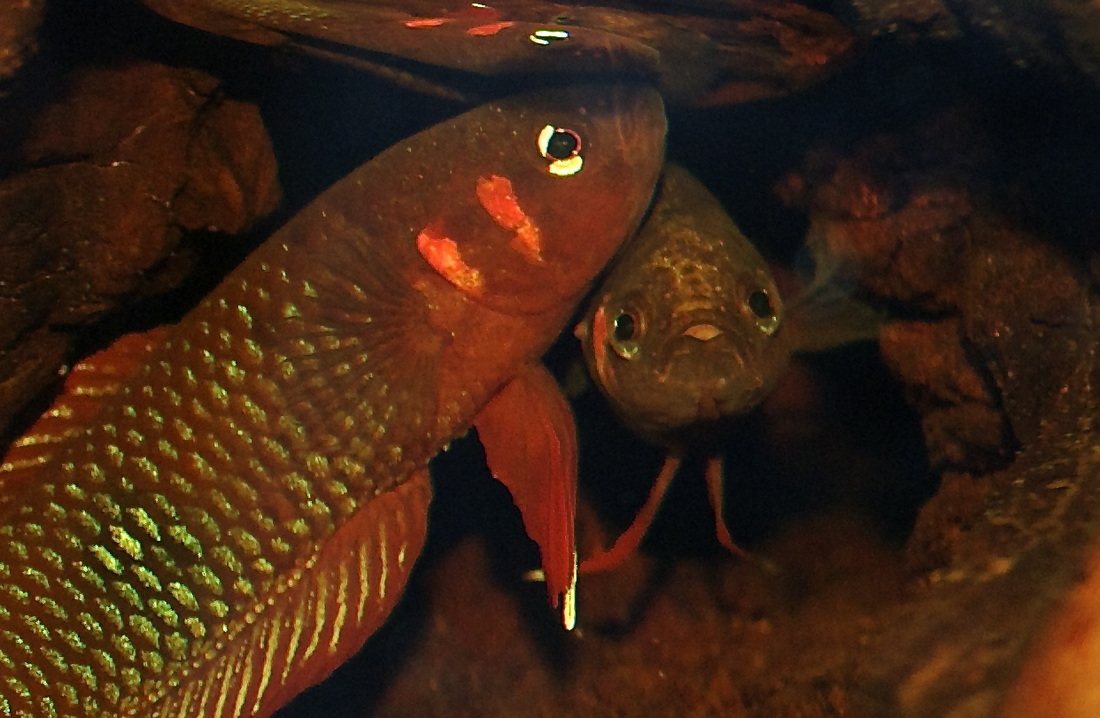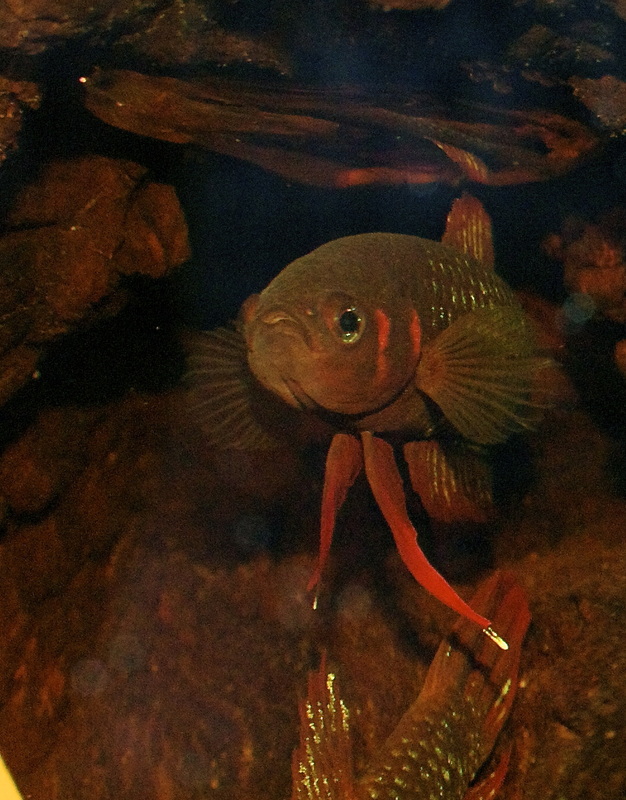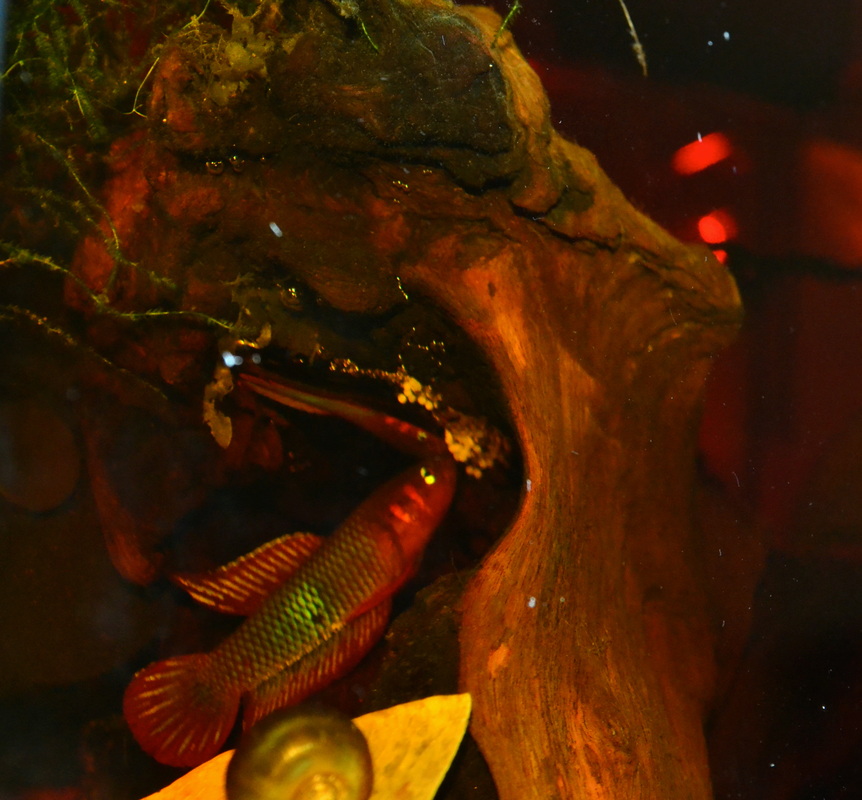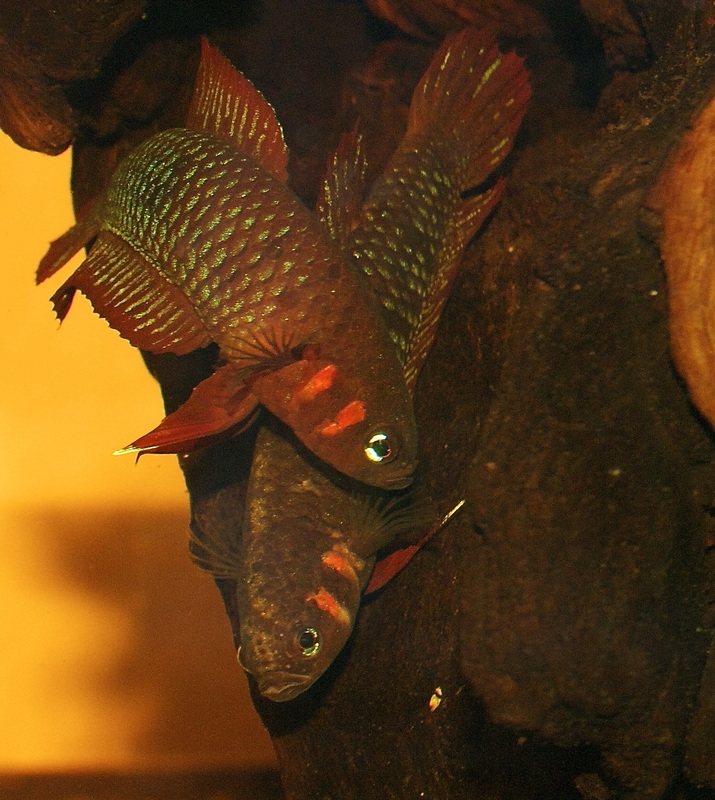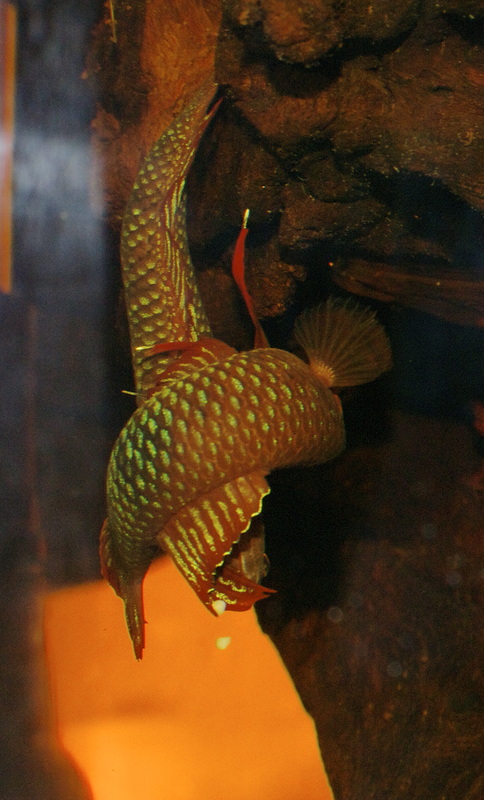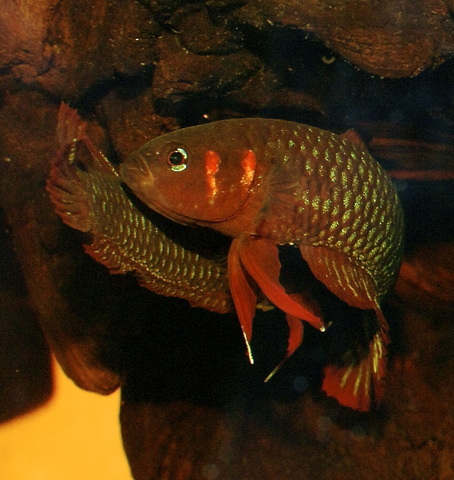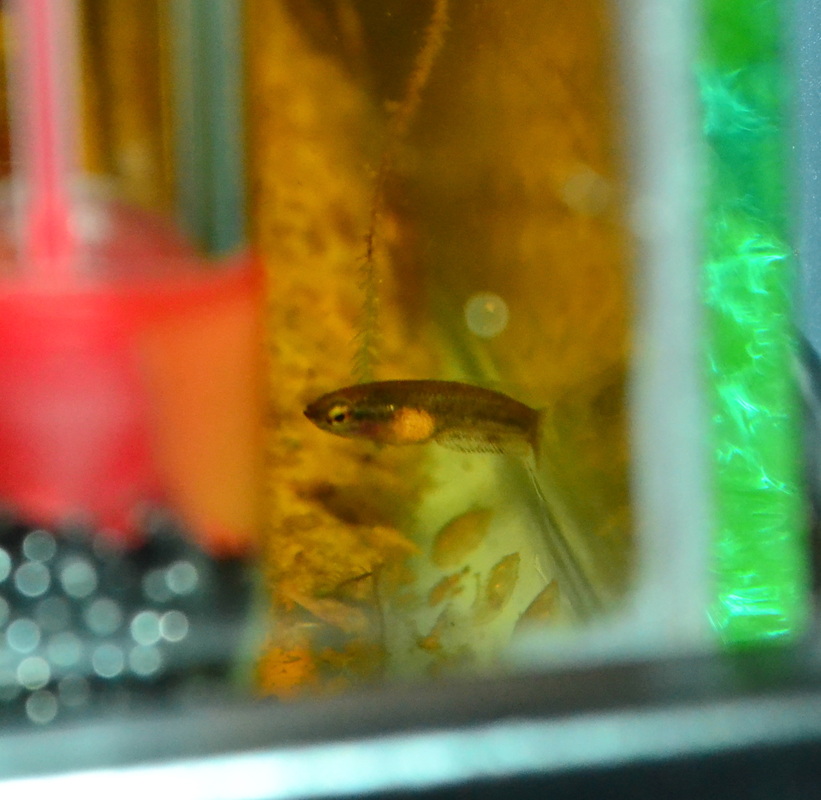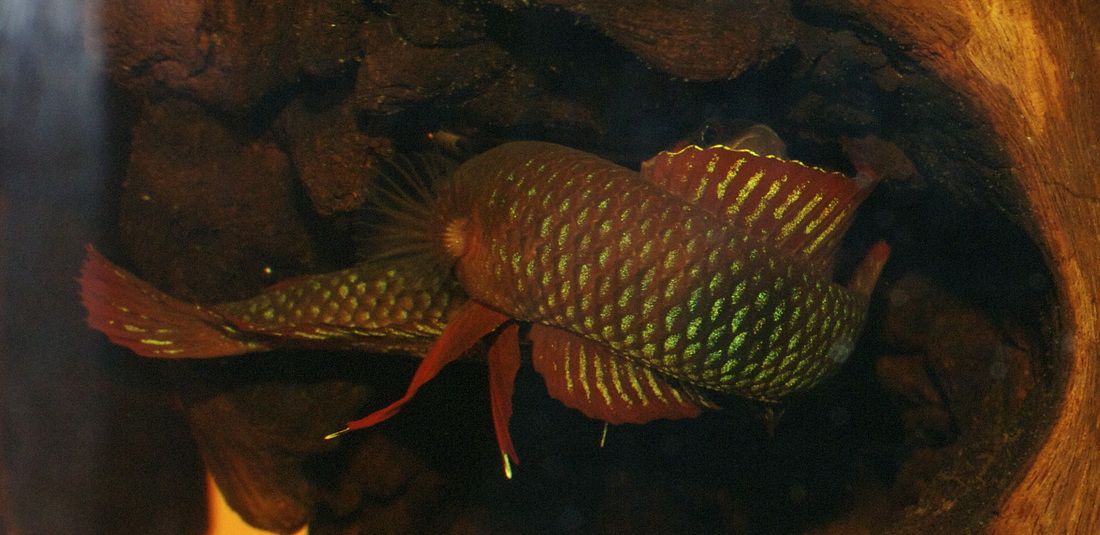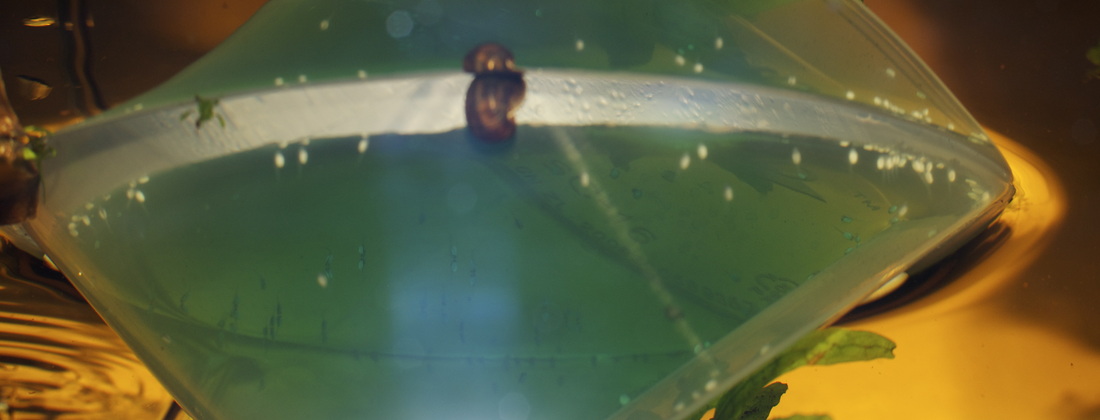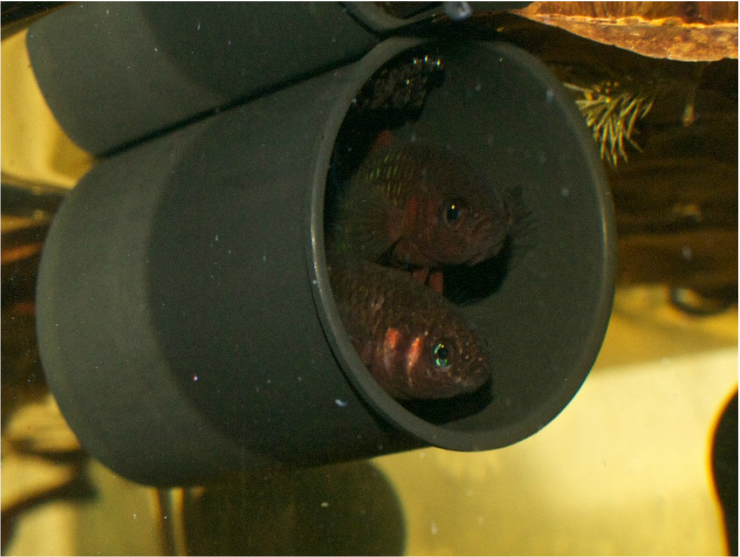Betta burdigala
Betta burdigala are just beautiful little bettas from the coccina complex. I received mine from a California Betta Society auction, where Hermanus Haryanto (excellent wild betta breeder from Indonesia) had sent a couple of pairs in to the show. I apprentice judged at that show, and was amazed when this paritcular pair was building a bubblenest in the show container! They don't get more ready than that!
Needless to say, when the pair went up for auction, I couldn't resist. I remember telling myself that I promised NOT to bring any bettas home, let alone a new species. Sigh. My bidding hand flew up of its own accord, and I brought home my new pair of Betta burdigala.
With the help of this extremely helpful website dedicated to bettas in the sometimes difficult coccina complex (Red Wine Bettas at http://redwinebettas.weebly.com/), I was able to set up a suitable home that has had them spawning with great regularity about once a week! I am very grateful for the extremely soft San Francisco water - I don't have to use an RO unit like most of the United States in order to combat the hard water that most coccina complex members cannot tolerate. Out of the tap, our water has almost zero hardness and neutral pH, so all I have to do is add a couple of shredded indian almond leaves to get perfect blackwater conditions. They are housed in a bare bottom 6 gallon square tank, not quite filled up to the top, and lots of driftwood. I have a heavy glass top that has NO gaps (if there were, I would use cling wrap too). I gave them a black film canister to spawn in.
Needless to say, when the pair went up for auction, I couldn't resist. I remember telling myself that I promised NOT to bring any bettas home, let alone a new species. Sigh. My bidding hand flew up of its own accord, and I brought home my new pair of Betta burdigala.
With the help of this extremely helpful website dedicated to bettas in the sometimes difficult coccina complex (Red Wine Bettas at http://redwinebettas.weebly.com/), I was able to set up a suitable home that has had them spawning with great regularity about once a week! I am very grateful for the extremely soft San Francisco water - I don't have to use an RO unit like most of the United States in order to combat the hard water that most coccina complex members cannot tolerate. Out of the tap, our water has almost zero hardness and neutral pH, so all I have to do is add a couple of shredded indian almond leaves to get perfect blackwater conditions. They are housed in a bare bottom 6 gallon square tank, not quite filled up to the top, and lots of driftwood. I have a heavy glass top that has NO gaps (if there were, I would use cling wrap too). I gave them a black film canister to spawn in.
|
I have to say that I was surprised at how terrible a parent the male is in comparison to males in the splendens complex. The female lays on average 20-30 very large eggs for their size, and the male only has a tiny submerged bubblenest to hold them up. He constantly drops them, and once the fry hatch, they are very large and fall even more. Often the male has a horrible time keeping up with them. I think only a few fry form each spawn actually reach free-swimming (and it takes up to 4-5 days for that to occur). It is VERY important to not frighten or disturb the male, because he can easily dislodge all of his eggs in one dash.
I let the juveniles grow along side the parents until they are about 2.5cm (1 inch) long. I then transfer them to a 75L (20 gal) tank. The alpha males can be quite aggressive and stunt the growth of subordinate males and females, so I try to re-home them or set up a new spawn tank once they are nearly adult size. Watching their behavior in the large tank is very interesting! The rival the show fish in their extraordinary color and flaring displays. |
Multiple nests?
In the past week, the male burdigala built and maintained TWO bubblenests after a water change - one underneath the driftwood, and another in the film canister. He frequented both sites about an even amount of time, and both were clearly cared for equally. They eventually spawned in the film canister, but I thought it was funny that the male seemed to be presenting the female with two different options :) Now that the eggs are in the film canister, he has let the nest underneath the driftwood deteriorate and stays with the eggs...although the female seems to check that nest out every once and while...
Artificial hatching yields higher survival rates!
I was annoyed that I was having such small spawns. After watching them spawn several times, I was sure that it was the male's faulty rearing that was causing the trouble. I don't know if all males are as terrible a parent as mine is, but my male tends to build a terrible bubblenest that can in no way keep 40-50 eggs in there. What ends up happening is that his constant shuffling causes his eggs to fall out of the film canister, where they are summarily eaten by snails. Although the pair spawn frequently, I have only been able to raise 3-4 fry from each spawn to adulthood. This needed to change!
|
I decided to attempt artificial hatching with the next spawn. Luckily my pair spawns fairly regularly, and I was able to scoop out the eggs in the film canister before the male had a chance to let them all fall. I tried floating them in a shallow cup of aquarium water with picking over day and night for fungused eggs. By the 2nd day, that thing SMELLED. nope nope nope.
The next time they spawned, I added the old aquarist favorite Methylene Blue. I have never used this agent before and was a little nervous. However, a very large percentage of the eggs hatched without problems! I transferred them at free-swimming to a waiting 3 gallon styrofoam breeding box for initial grow-out. The fry appear to be developing normally so far. The best part? A LOT of them! Hopefully I can send them to as many breeders as possible this next show season! |
Update 7/21/15
Although I completely love these fish, and unfortunately not a lot of people maintain this species, I am going to drop this project in favor of focusing on the rubra. I do not have enough space to grow out both species, since I believe combining them in a growout would be a disaster because the burdigala are so aggressive. Maybe one day I will return to this species, but for now, I will focus on a few species to optimize their care. I believe many hobbyists stretch themselves too thin with too many projects, and end up accidentally neglecting their fish. I know that I have done that in the past!
Although I completely love these fish, and unfortunately not a lot of people maintain this species, I am going to drop this project in favor of focusing on the rubra. I do not have enough space to grow out both species, since I believe combining them in a growout would be a disaster because the burdigala are so aggressive. Maybe one day I will return to this species, but for now, I will focus on a few species to optimize their care. I believe many hobbyists stretch themselves too thin with too many projects, and end up accidentally neglecting their fish. I know that I have done that in the past!

